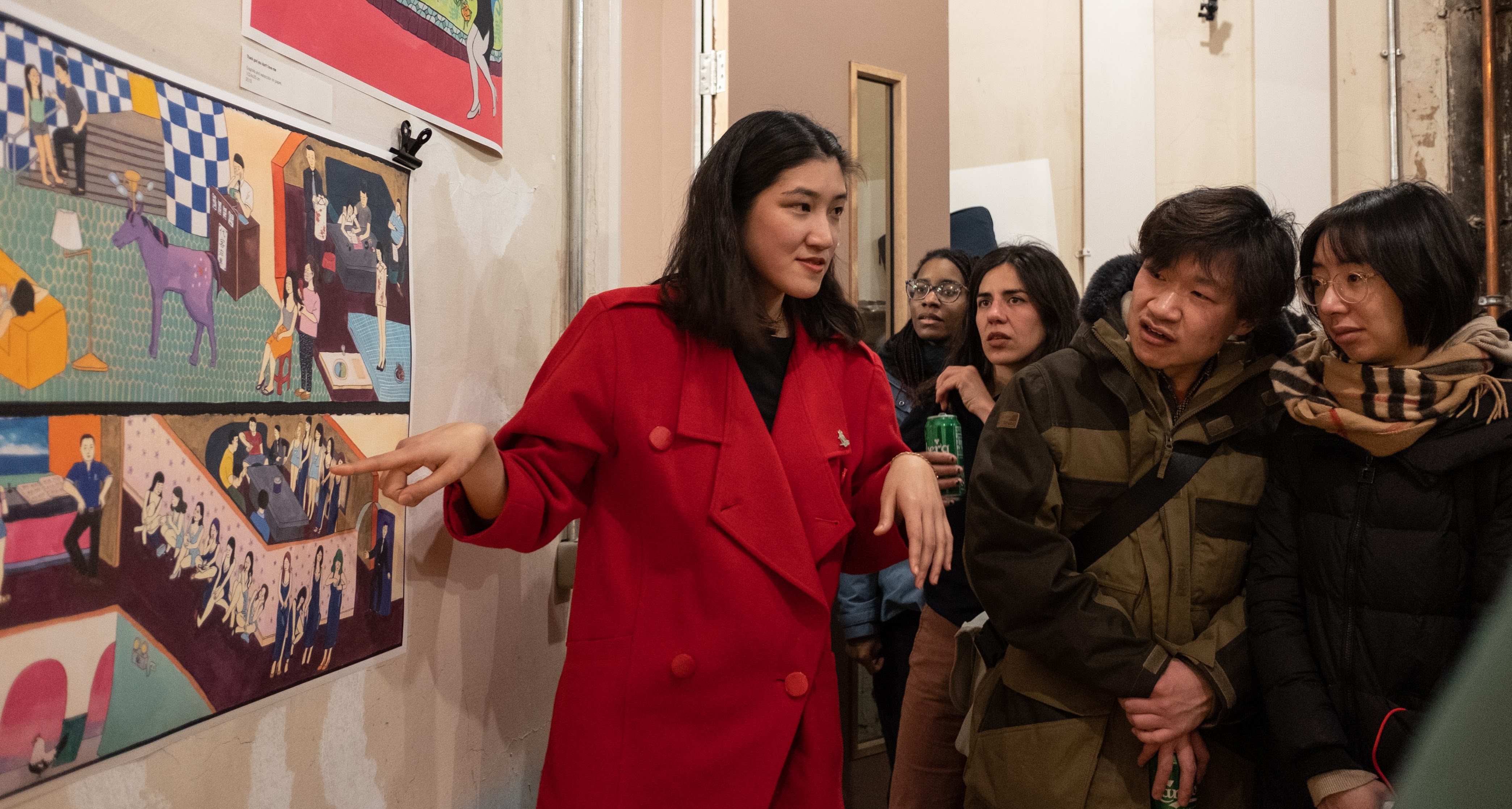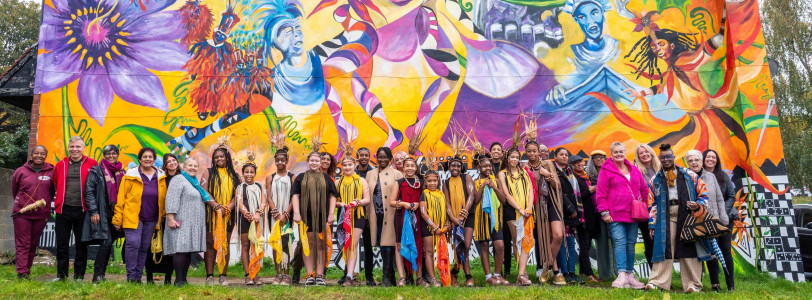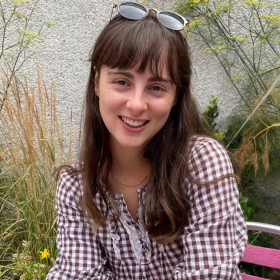Please introduce yourself to the reader and tell us about East Street Arts.
Karen: I am Karen Watson and alongside my partner Jon I founded East Street Arts in 1993. I left the organisation recently after 30 years of driving it forward through various roles and responsibilities ensuring it remained relevant and innovative. East Street Arts is a visual arts charity that supports artists at whatever stage of their career to develop and show new work, and engage with audiences and participants.
Jon: I’m Jon Wakeman, and I have continued to work at East Street Arts as the sole Artistic Director since Karen left. We have long felt that leading the organisation has been our arts or creative practice, and we do consider ourselves artists. As Karen says East Street is focused on artists, and we are always looking for the gaps in our cities where art and artists can take root, whether through projects, placement or buildings.
Why did you start East Street Arts?
Karen: We moved back to Yorkshire after Jon completed his degree in Sunderland and aimed to find a space in Leeds to develop our own practice. We had experienced quite strong artist-led organisations and events in other cities, such as Manchester and Newcastle, but Leeds felt like it was struggling despite having so many art graduates. We were very interested in how visual artists, through their thinking, idea development and execution of work, could impact outside of the recognised gallery system within our communities and through the fabric of our society. We started East Street Arts to explore this and understand our practice better.
Jon: We started it for a mix of reasons, some of which have not become apparent until much later and upon reflection. We are both independently minded, and it seemed such a logical step as artists: you need space, so you set up a studio exactly how you want it to be. I think we just continued that practice of making things, which included a building in the end. As mentioned above, there was more of a gaping chasm, rather than a gap, for us to step into and have some fun!
How have you experienced the power of art and culture to create community in this setting?
Karen: I think for me what it comes down to is that it is always about people. Artists are great at helping to unlock and express ideas. But they don’t operate within a vacuum and they need people to engage with. It is this mix that creates the power to make a difference within communities. Sometimes it can be small and subtle – it is not always a big impact statement. But this way of working does take time as trust and care needs to be built.
Jon: I think, like Karen, the changes have often been subtle and always about the people involved. Over this last year, our 30th year of East Street Arts, the emails and comments coming in have been about how artists felt they grew up at East Street and how the support and opportunities really helped them develop. We had never envisaged how much of an effect the organisation would have had on people.
I think we have seen the change it had on the city, again subtly, but it's there. From Leeds Fringe Photography Festival in 1998 to Situation Leeds taking place in 2005 and 2007, through to Leeds23. There was a great number of people who made Leeds23 happen who had also been part of or involved in East Street Arts over the years. That kind of community impact takes decades of continuity and work.
How have you affected change in the local community through grassroots empowerment?
Karen: I think artists working with communities don’t always know the effect they have because sometimes it takes time for it to be realised – for both parties. Working with communities can really impact artists and the development of their work. I think the most important aspect is relational: the continued two-way relationship between community neighbours and artists really impacts both groups.
Some of our projects have included: the neighbourhood plan process; our adult learning programme; working with a range of partners and residents for the Chapeltown Carnival mural; or the series of artists in residence living and working in Beeston as part of Artist House 45.
It’s important that artists are really well supported to develop their work and to work with communities and neighbourhoods. It’s also important that there is time to develop relationships(the projects mentioned above operate over years). Finally, I think the ‘why’ is important, ensuring there is a clear understanding about why we are all working together.
Jon: Again, as Karen says, the impact takes time, and you don’t often have an inkling that there has been any. This is hard in the current funding regimes where results are frequently demanded NOW!
That said, I think we have much more to do over the coming years to develop and affect change in our immediate surroundings and neighbourhoods of Lincoln Green and Burmantofts, with roughly 10,000 people speaking 70+ languages, right on the edge of Leeds city centre. We have led the setting up of a Neighbourhood Forum, supported by Leeds City Council, and that has taken 6 years, so you can see how slow change is if it is really going to stick.

Tell us about a recent ESA programme that has involved the community.
Karen: I am currently involved in helping some of the staff at East Street Arts to develop and deliver a project that links back to the archives of the organisation. We are launching a publication that celebrates our artist residency project Artist House 45, the PhD research that took place alongside this on artist-led housing, and the projects developed by the artists involved and their relationship to a street in Beeston. The project itself was helping us explore the impact artists can have through living as well as working in communities.
One of the issues that has come out of this for me is that an archive can tell the story of the organisation – how we developed the project, how we got funding for it, who was involved, how it was managed. But it is harder to understand the story of the interaction between the artists and the people that lived and worked around the house and street without opening up conversations and digging deeper. This is about what we can capture at the time.
We worked with an artist Sylvia Leibig who is based in our twinned city of Dortmund and who lived in the house for a couple of months prior to lockdown, and she created the Being Beeston project. During her stay she interacted and talked with everyone: the kids next door, the people serving in the Polish bakery, delivery men, local social club members. Her work was the essence of these interactions and the exchanges she had with everyone. It has resulted in a very creative graphic novel that gives some indication but not all of the impact Silvia had in her time at Beeston.
Jon: On a slightly different scale we are working with Arts Council England on leading the Creative Workspace Network, which aims to give voice to artist-led organisations nationally, with currently some 300 members. Something to get our teeth into!
More specifically, we work directly in live situations as we are in Keighley, where we are collaborating with Keighley Creative to deliver a creative hub in an old department store. This will solidify the years of work that Keighley Creative have already delivered in engaging the communities in and around Keighley town centre. Again, this is a capital project of no small undertaking, we have managed to raise just shy of £4 million and it’s going to be delivered as part of Bradford 25 City of Culture.
 Photo Credit Hannah Platt
Photo Credit Hannah Platt
What challenges have you faced during your time at East Street Arts?
Karen: The challenges for me are undoubtedly all linked to how you keep an organisation moving forward, relevant, solvent, dynamic, open, and fluid as everything around you is in constant flux. Artists and their needs change, expertise needed to develop projects and take on board community feedback is forever developing, funding bodies review, adapt and update their requirements regularly. How do we remain relevant within a world that is massively at conflict with climate change, immigration, austerity or poverty, and increasingly countries and nations at war?
We have tried to overcome these challenges by reminding ourselves why we set it up in the first place, checking regularly if it is still making a difference, adapting and changing to needs and situations, embracing feedback even if it feels harsh.
Jon: I am not sure there is much I can add to Karen’s words except to say that without the support of each other, we would never have achieved what we have. To say it has dominated our lives is an understatement, but colleagues, the pub and football kept us going!
What advice would you give to those who want to start a community arts initiative?
Karen: Follow your gut instincts, talk to lots of people you think you might learn from or can share learning with, stick to your vision, enjoy it and look after yourself.
Jon: I always end my talks with these wise and overly simplistic words of advice.
- Do good works
- Buy a building
- Make money
- Do more good works
- Repeat (buy another building)
- Don’t listen to people who say you’ve done the wrong thing or can’t be done!









0 Comments